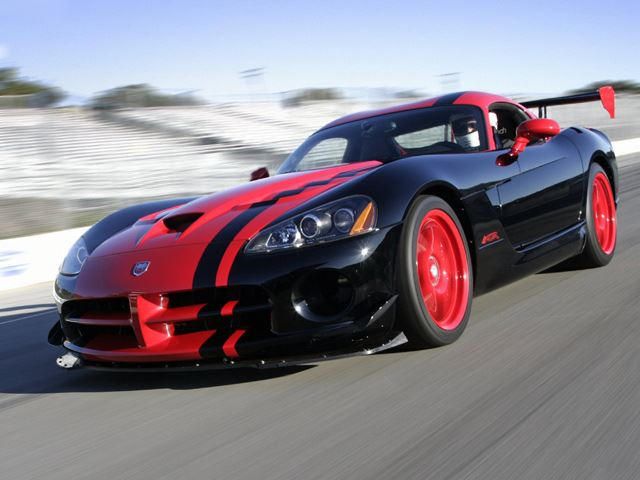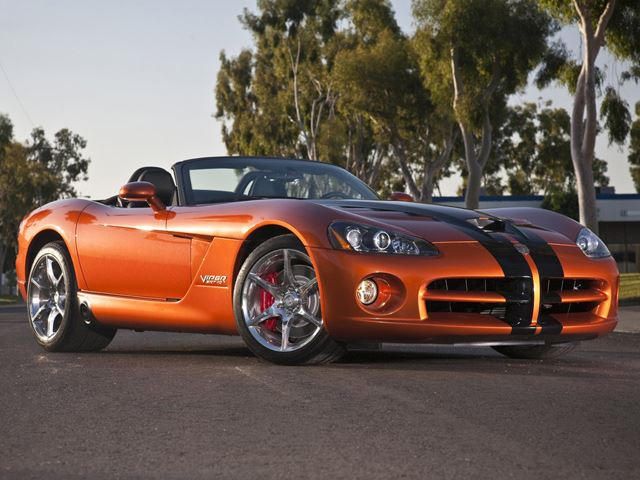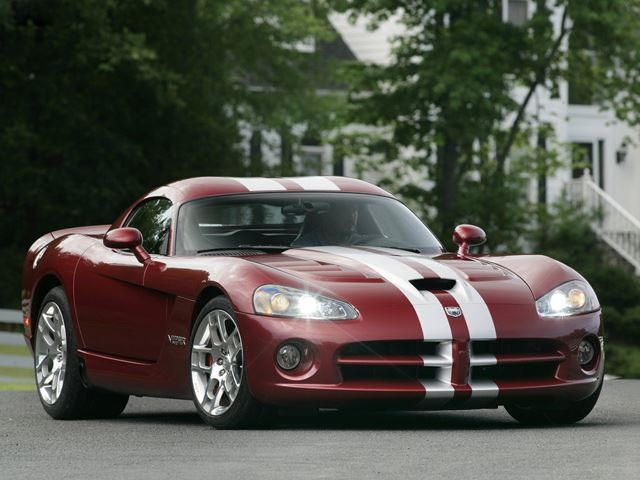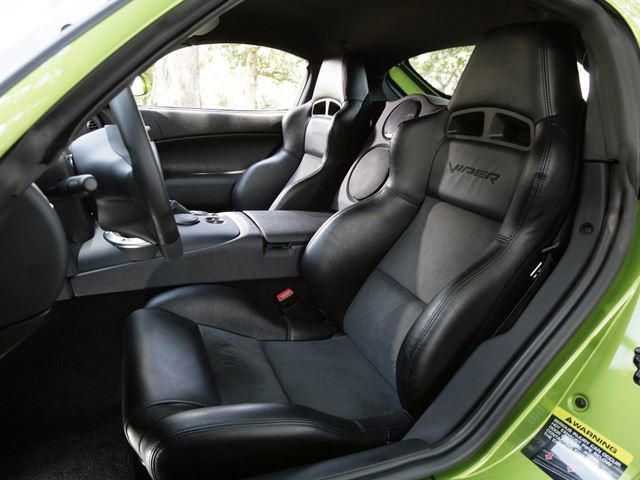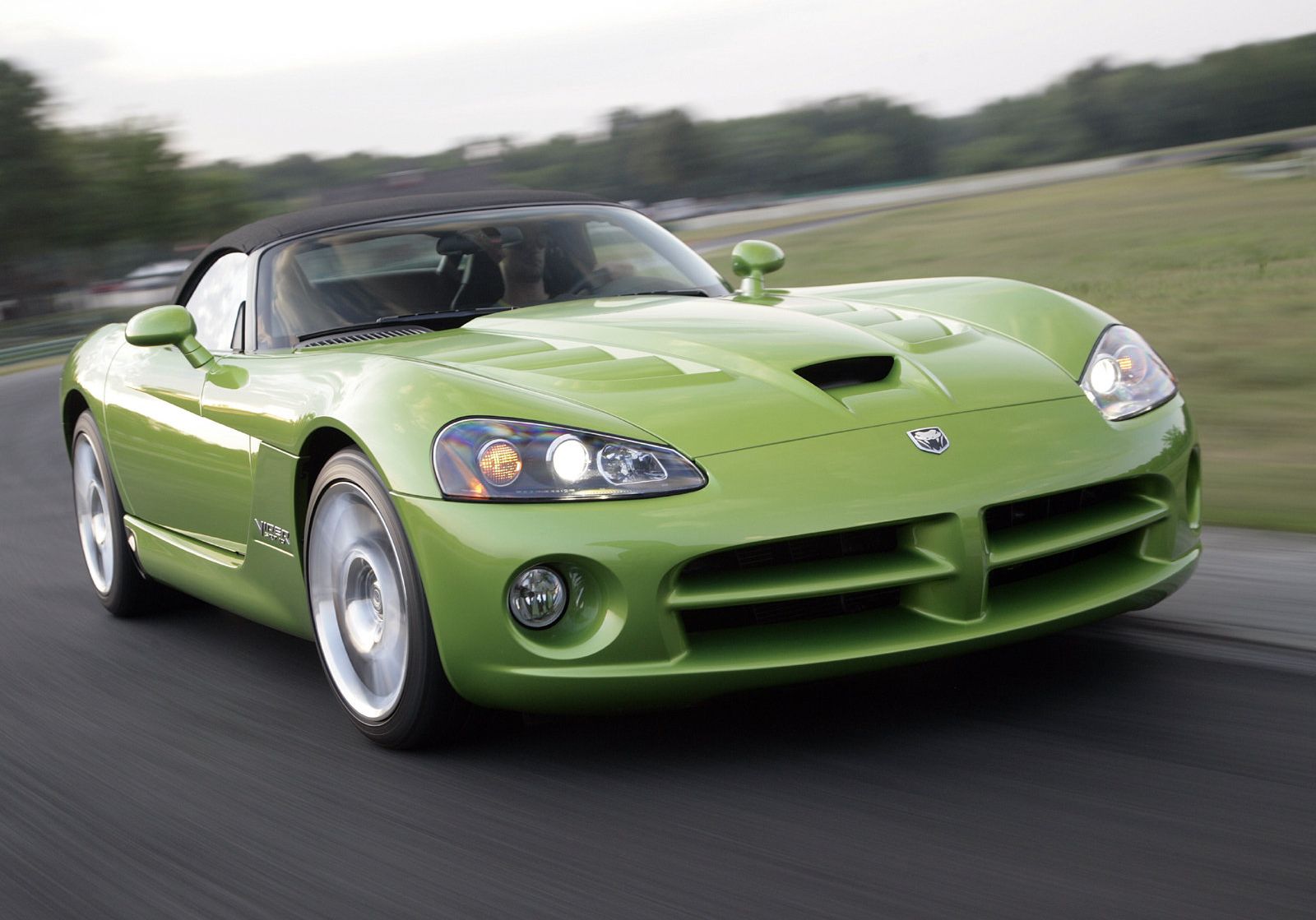
You've probably noticed a pattern here regarding the Dodge Viper's output. With every mid-cycle facelift and generation, horsepower increased and weight was lost. Because competition. Because pure reputation. The refreshed second generation Viper, launched in 2008, was no different. As yesterday's Viper feature explained, not everyone was a fan of the redesigned Viper's styling. Those curvy lines were replaced by straight angles throughout, but now it was time to refine its engine.
While Dodge barely made exterior changes for this facelift, forcing Viper lovers to accept that new look, improvements were made to its V10 once again. This time it was increased from 8.3 to 8.4 liters. Total output? Try 600 hp and 560 lb-ft of torque up from 510 and 535, respectively. So how did SRT engineers accomplish that? Two outside (English, actually) companies were hired for their assistance: McLaren and Ricardo Consulting Engineers. Those two would later work together to develop the former's now famous 3.8-liter twin-turbo V8. With their expertise a more sophisticated and powerful updated V10 was created. It involved, among other things, increasing the cylinder bore by just one millimeter, which increased capacity to 8.4 liters.
A new block was added with cross-bolted main bearing caps for improved durability, along with new cylinder heads. Another clever update saw a cam within a camshaft use hydraulic pressure to vary exhaust valve timing. If you recall, previous Viper cabins became quite hot because of exhaust crossover pipes. Those were finally eliminated in favor of a new manifold and tubular header exhaust system which, obviously, cooled things off for driver and passenger. It also produced a better exhaust note, a common complaint about its predecessor. And because of that torque increase, Dodge was also forced to replace the six-speed manual gearbox, which was carried over from the facelifted first-gen car.
This time engineers opted for a twin-plate clutch in order to reduce rotating inertia. Gearing ratios were increased as well. The rear axle was given a limited-slip differential that helped the tires achieve better grip when accelerating. Road test engineers decided to get rid of the run-flat tires by swapping them for Michelin Pilot Sport 2 tires. Doing so increased grip and driver feedback. Changes to the suspension included revised springs, shock valving, and anti-roll bars. This was all accomplished with only a slight increase in curb weight. Performance times? Very impressive, to say the least. Car and Driver reported a 0-60 mph time in 3.6 seconds and 0-100 mph in 7.6 seconds.
The quarter-mile happened in 11.5 seconds at 126 mph. The Corvette Z06 made that same sprint in 11.6 seconds at 126 mph. But the biggest news was the Viper coupe's new top speed: 202 mph. The Roadster managed 197 mph. In other words, for the first time a stock Viper broke the 200 mph mark. For a car that never sold in significant numbers, compared to the Corvette, for example, Dodge invested a significant amount of time and money in order to give its Viper a proper dose of sophistication. That's not to say it became tame; it was still not a suitable daily driver. But it was the best driver's car compared to any previous Viper.
In fact, Dodge believed the Viper's improvements were significant enough to consider it as a new generation, as opposed to a refresh. Once again, the track-mad Viper ACR returned and made its mark as well. Despite everything, however, Viper sales, while never great, began to tumble even more. But what most likely caused the Viper's death blow was the global economic meltdown, which, as we all know, put Chrysler itself on the brink of collapse. And so in November 2009, literally exactly six years ago today, Dodge CEO Ralph Gilles announced Viper production would end the following summer. 2010 became the official last model year for this generation.
There was a Viper SRT-10 Final Edition, but only 50 examples were built; demand had really become that low. The Viper simply wasn't vital to Chrysler's survival and money was needed elsewhere. Still though, there were many at Dodge, specifically Gilles, who couldn't accept the era of the Viper was done for good. Fortunately, Chrysler's finances began to improve, with the help of one Sergio Marchionne and his newly established Fiat-Chrysler Automobiles (FCA). He too appreciated the Viper and later gave Gilles and crew the go-ahead for some fresh venom.

